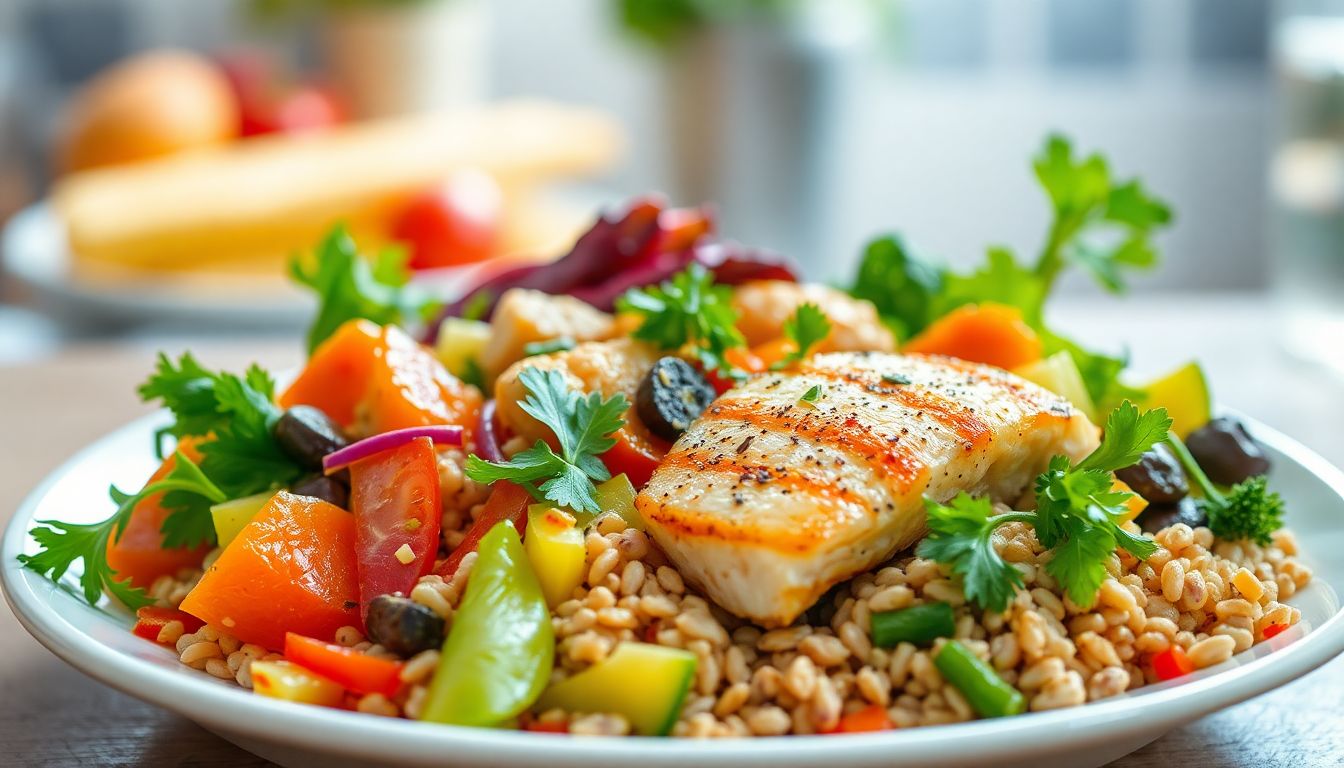
Low-Sodium Healthy Meal Options for a Stronger Heart
The average American consumes around 3,400 milligrams of sodium daily—well above the recommended limit of 2,300 milligrams. This excess can lead to high blood pressure, heart disease, and strokes. Reducing sodium in your diet is a simple yet effective step toward better health and longevity.
The Role of Sodium in Your Health
Why Your Body Needs Sodium
Sodium plays a crucial role in maintaining fluid balance, nerve signaling, and muscle contractions. However, excessive sodium intake can elevate blood pressure, straining the heart and increasing the risk of cardiovascular diseases. For optimal heart health, the American Heart Association advises limiting sodium intake to 1,500 milligrams daily, especially for those with heart concerns.
Hidden Sodium Sources
Many foods contain more sodium than you might expect. Processed items, canned soups, and even bread can have surprisingly high levels. For instance, a single slice of store-bought bread may contain up to 200 milligrams of sodium. Condiments like soy sauce and salad dressings are also notorious for their sodium content.
Signs of Too Much Sodium
Excessive sodium can cause:
- Bloating
- High blood pressure
- Persistent thirst
- Headaches
- Fatigue
Delicious Low-Sodium Breakfast Recipes
Quick & Easy Options
-
Overnight Oats
- Ingredients: Rolled oats, almond milk, chia seeds, fresh fruit
- Preparation: Mix all ingredients in a jar and refrigerate overnight.
- Nutritional Info: ~200 calories, 5 mg sodium
-
Avocado Toast
- Ingredients: Whole-grain bread, mashed avocado, black pepper, and a squeeze of lemon
- Preparation: Spread avocado on toasted bread and season to taste.
- Nutritional Info: ~180 calories, 140 mg sodium
Hearty & Filling Choices
-
Veggie Omelette
- Ingredients: Eggs, spinach, bell peppers, mushrooms
- Preparation: Whisk eggs, pour into a pan, add veggies, and cook until set.
- Nutritional Info: ~250 calories, 200 mg sodium
-
Quinoa Fruit Bowl
- Ingredients: Cooked quinoa, almond milk, fresh berries, nuts
- Preparation: Combine all ingredients and enjoy!
- Nutritional Info: ~300 calories, 5 mg sodium
Breakfast Tips:
- Use fresh, unprocessed ingredients.
- Season with herbs and spices instead of salt.
- Avoid pre-packaged breakfast items.
Low-Sodium Lunch & Dinner Ideas
Healthy Lunch Recipes
-
Chickpea Salad
- Ingredients: Rinsed canned chickpeas, cucumber, cherry tomatoes, olive oil
- Preparation: Toss ingredients together in a bowl.
- Nutritional Info: ~250 calories, 80 mg sodium
-
Grilled Veggie Wrap
- Ingredients: Whole wheat wrap, grilled zucchini, peppers, hummus
- Preparation: Spread hummus on the wrap, add veggies, and roll.
- Nutritional Info: ~300 calories, 300 mg sodium
Flavorful Dinner Recipes
-
Baked Lemon Chicken
- Ingredients: Chicken breast, fresh lemon juice, garlic, rosemary
- Preparation: Marinate chicken and bake until cooked.
- Nutritional Info: ~350 calories, 150 mg sodium
-
Vegetable Stir-Fry
- Ingredients: Mixed vegetables, brown rice
- Preparation: Sauté vegetables in olive oil, then serve over rice.
- Nutritional Info: ~400 calories, 170 mg sodium
Smart Grocery Shopping for Low Sodium
- Look for products labeled “low-sodium.”
- Opt for fresh or frozen fruits and vegetables.
- Try brands like Eden Foods and Amy’s Kitchen, known for low-sodium options.
Snacking Smart
Healthy Low-Sodium Snack Ideas
- Fresh fruits like apples or bananas
- Raw veggies paired with hummus
- Unsalted nuts
Avoid Processed Snacks
Packaged snacks often have high sodium levels. Check nutrition labels carefully and prioritize whole food alternatives.
Stay Hydrated
Water helps your body manage sodium levels. Aim for at least eight glasses daily to support overall health.
Long-Term Success on a Low-Sodium Diet
Start Small
Begin by reducing sodium in just one meal a day. Gradually adjust your entire diet for sustained health benefits.
Consult Experts
A dietitian or doctor can guide you in creating a balanced, low-sodium diet to ensure you’re meeting all your nutritional needs.
Enjoy the Benefits
A low-sodium lifestyle can lower your risk of heart disease, enhance energy levels, and improve overall well-being.
Conclusion: Embrace a Heart-Healthy Lifestyle
Transitioning to a low-sodium diet is one of the simplest ways to protect your heart. Prioritize whole foods, fresh ingredients, and natural flavors. Remember, small changes lead to big results. For more guidance, visit the American Heart Association and take the first step toward a healthier life today!

0 Comments